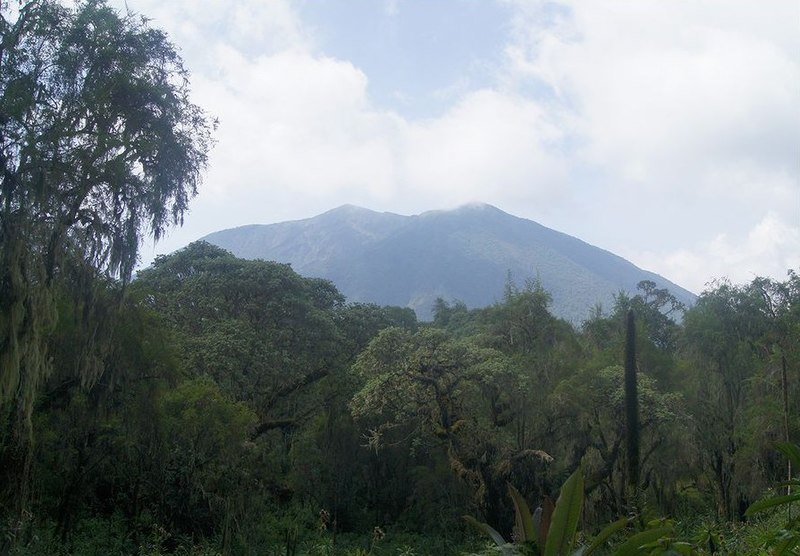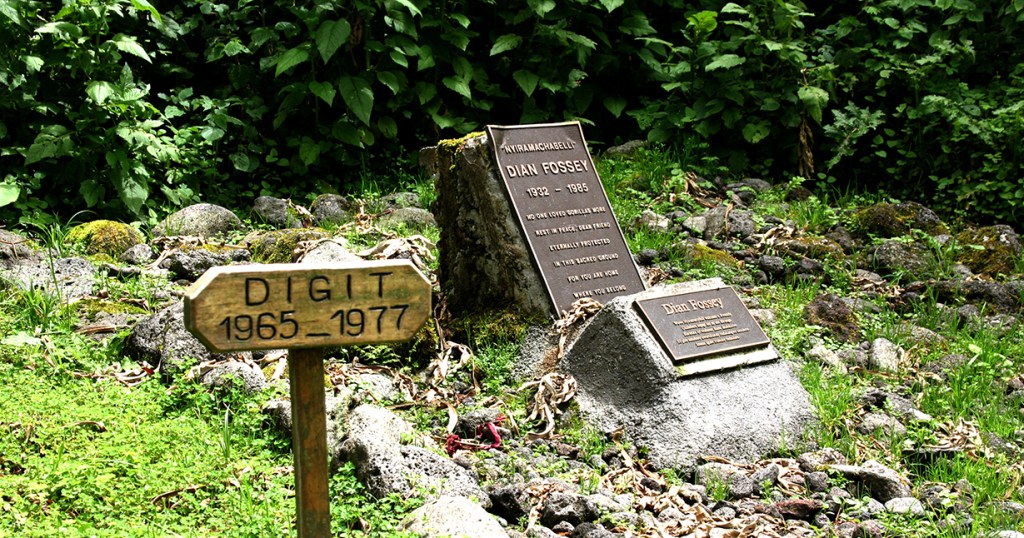A leading primatologist who spent 20 years studying mountain gorillas, American Dian Fossey’s 1983 book Gorillas in the Mist is widely regarded as one of the most important works every written on the subject of our connection to the natural world. Vehemently opposed to poaching, Fossey was ultimately murdered at a remote camp in the Virunga Mountains, Rwanda. While a member of her staff was convicted of the killing in absentia, theories remain that she was killed due to her disruption of profitable industries including tourism, the illicit trade of wild animals and animal parts, or gold mining.
Born and raised in San Fransisco, Fossey enrolled to study a pre-veterinary course in biology at the University of California, Davis. However, her struggles with chemistry and physics saw her fail during her second year, transfering to San Jose State College where she completed a bachelor’s degree in occupational therapy. However, in 1963 she took out a loan of $8,000 dollars, withdrew her life savings, and embarked on a seven-week trip to Africa. Touring through Kenya, Tanzania, Democratic Republic of Congo and Rhodesia, her final destination was Mountt Mikeno in the Virunga Mountains, best known as the site where American zoologist George Schaller carried out pioneering research on mountain gorillas in 1959.

Fossey returned home to pay off her loans and publish a number of articles about her visit to Africa. However, her experience with mountain gorillas stayed with her, and three years later she returned to Virunga to carry out a long-term study of gorillas, inspired in part by fellow primatologist Jane Goodall’s research on chimpanzees in Tanzania. Arriving in Kenya in 1966, Fossey was able to secure supplies and an old Land Rover. She the next nine month studying gorillas in close proximity, although her project was disrupted by the internal upheaval in the Congo at the time. After her and her escort were arrested by the Ugandan military, she looked elsewhere for a suitable study area and established the Karisoke Research Centre in a remote area of Rwanda’s Volcanoes National Park in September 1967.
During her studies in Rwanda, Fossey made a number of discoveries about gorillas, including how their social groups were structured, how they communicated, and the makeup of their diet. In 1970, she was featured on the cover of National Geographic. By 1980, she was widely recognised as the world’s leading authority on gorilla behaviour.
Fossey was also aggressively protective of the gorilla’s habitat, and was accused of shooting the cattle of local farmers that had wandered into the area. She was adamantly opposed to wildlife tourism, fearing that outsiders would bring human diseases that the gorillas had no protection against. While many research students traveled to work with her, many left shortly after due to the grueling conditions, often requiring pathways to be cut with a machete.
On three occasions, Fossey witnessed the aftermath of poachers capturing young gorillas. Gorillas are highly protective animals, and the adults of a group would all be killed to allow the infants to be taken away for sale. On New Year’s Eve 1977, a favourite gorilla of Fossey’s she had nicknamed Digit was killed and his head and hands removed to be sold to tourists. Digit had protected his group from six poachers and their dogs, killing one dog and taking five spear wounds before being killed, allowing the 13 other members to escape.
Fossey and her researchers later captured one of the poachers, successfully extracting the names of five accomplices, three of which received prison sentences. Fossey became increasingly withdrawn following the incident, and was reported to have captured and tortured more suspected poachers. She admitted herself in a letter to a friend that she had thrashed one poacher’s testicles with stinging nettles.
Early on December 27th, 1985, members of her staff found Fossey had been murdered in her cabin at Karisoke. Her attacker had cut a hole in the wall of the cabin before killing her with two blows to the head from a machete. The cabin was in disarray and a 9mm handgun and bullets lay close by her, suggesting she had fought with her attacker and attempted to load one of her pistols before being killed. Valuables including thousands of dollars in cash and traveler’s checks had not been taken, ruling out robbery as a motive.

Following the murder, the entirety of Fossey’s staff were arrested. The prime suspect became a tracker named Emmanuel Rwelekana, who had been fired by Fossey shortly before her death after allegedly attacking her with a machete. He later hanged himself in prison. However, her assistant Wayne McGuire was later convicted in absentia for her murder, having returned to the US, allegedly in order to steal the manuscript for Gorillas in the Mist.
Many subsequent researchers have questioned the conviction of McGuire, suggesting that Fossey was killed because she threatened to disrupt the lucrative wildlife tourism and bushmeat trades in Rwanda. There has also been the suggestion that she had built up incriminating evidence against local gold miners and was killed to ensure her silence.
Fossey was buried in the gorilla graveyard she had previously established for gorillas killed by poachers near Karisoke, in the plot next to Digit. She is generally credited with reversing the decline of mountain gorilla populations seen during the 1960s and 1970s. Karisoke continued to operate as a gorilla research station until it was looted and destroyed during the Rwandan genocide in 1994.

I knew who Diane Fossey was but not the information surrounding her mysterious death. I also didn’t know her weakness in chemistry and physics foiled her aspiration to becoming a vet. Based on my reading of your post, methinks that there might be more than poaching motives to the murder of fossey. Racial tensions might have been one of motives? I hope truth will transpire. Great post! 👍
LikeLiked by 1 person
No, I don t think racial tensions had anything to do with her death at all. Lucrative trade, totally.
LikeLike